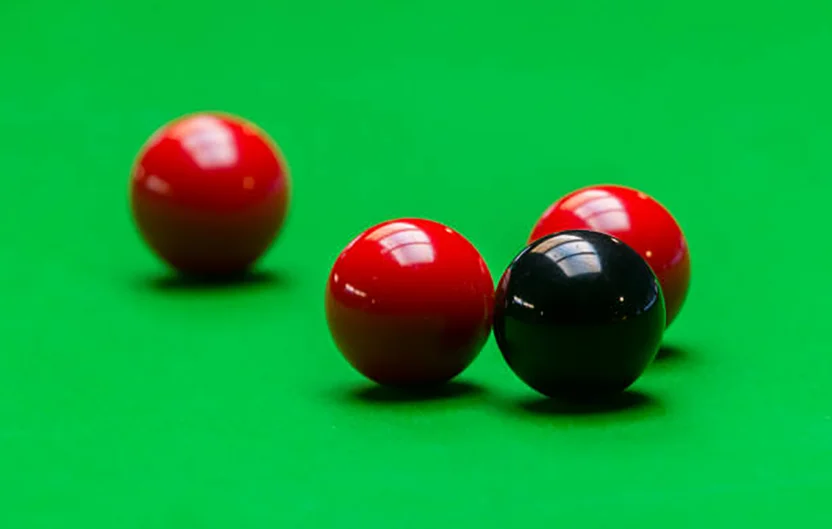Ask any experienced snooker player what the difference is between an average club player and a true master of the cue sport, and they’ll likely tell you one word: control.
Not power, not flair—it’s the calm, precise control of the cue ball that makes every shot look effortless. In fact, the key to both snooker and English pool isn’t the power of your strikes, but how to precisely control the ball to dance as desired. And that starts with understanding the cue stick.
The Difference Between a Good Shot and a Great One
Have you ever had that feeling? When you aim a long red ball, hit it perfectly in the center, and the white ball rolls back to the black—smooth as silk? That wasn’t luck, it was cue control.
Control is the invisible bond that connects every great player. It’s the rhythm of your cue movements, the technique of your grip, and the confidence to trust your equipment to respond the way you expect.
But most players make the mistake of underestimating the impact of the cue on control. You can practice until your hands ache, but if your billiards cue isn’t tuned to your touch, you’ll always be fighting against it rather than working with it.
Finding Your “Cue Rhythm”
Every player has a natural rhythm—an instinctive rhythm of strokes. Some are quick and agile; others are deliberate and fluid. The perfect pool cue should match this rhythm.
A cue that’s too heavy will make your action stiff. A cue that’s too light, and you might unconsciously over-strike the cue ball. The tip size is also more important than most people realize—a 9.5mm cue tip offers pinpoint precision for snooker, while an 8-9mm tip is perfect for smaller balls like English pool.
Think of your cue like a musical instrument. If it’s not tuned to your style, even the best technique won’t sound right. Once you find the right one, though, everything just flows — every shot feels in sync.
It’s Not Just the Cue — It’s the Connection
Cue sports aren’t just mechanical; they’re emotional.
A good pool cue stick feels personal, almost like a trusted old friend. You know how it reacts under pressure, how the weight shifts in your fingers as you line up a shot, how the sound of the contact tells you if you’ve struck cleanly.
Players often talk about “feeling” the shot — that’s not superstition. It’s your body responding to the cues’ feedback. The grain of the wood, the flex in the cue shaft, even the balance point between butt and tip all combine to give you information.
When you’re in tune with your billiards, you stop thinking about your technique and start feeling the game. That’s when magic happens.
Common Player Pain Points
Let’s be honest—we’ve all been there. You miss easy shots, struggle to control the cue ball, or just can’t seem to find consistency. Before blaming your form, check your club setup:
- Worn or hard cue tip: Makes spin control unpredictable. Retip your cue regularly — or learn how to replace your cue tip yourself.
- Warped shaft: Even a slight bend can prevent you from hitting a straight shot. Store your snooker cue properly — ideally in a hard cue case.
- Wrong weight or balance: If your cue feels unnatural, it probably is. Don’t settle for discomfort; try different weights until you find your sweet spot.
- Slippery finish: If your billiard cue feels sticky or uneven, lightly clean it with a soft cloth and a touch of cue cleaner to restore the glide.
A pool cue in poor condition doesn’t just affect performance — it chips away at your confidence. And in cue sports, confidence is crucial.
From Local Clubs to Tournaments: Why Consistency Is King
Every good player knows that persistence wins tournaments. The ability to reproduce the same shot with the same precision under pressure is what makes a good player a formidable opponent.
For this reason, cue care is just as important as cue selection. Keep the cue tip in good shape, the shaft clean, and the joints tight. It’s like maintaining your snooker, just like maintaining your car—you don’t want it to let you down in the clutch.
And if you’re playing both snooker and English pool, consider owning two cues. Their requirements differ — snooker cues are longer and thinner, while English pool cues are typically shorter with smaller tips. Using the wrong one can throw off your control and feel.
Feel the Game, Don’t Force It
Cue sports are beautiful because they blend precision with artistry.
The best players don’t force the cue ball across the pool table—they guide it. They understand that control isn’t about power, but about grace, balance, and timing.
So, whether you’re aiming for your first 50 break or simply want to avoid over-slicing in easy pockets, start by recalibrating your cue. Feel the balance, check the cue tip, and play with rhythm, not power.
Because when cue, player, and table move in harmony, the game becomes more than a game; it becomes a craft. Believe me, once you’ve tasted this level of control, you’ll never go back.









